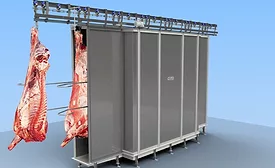Articles by Bob Ogren
How to use less water for beef processing without compromising food safety
While keeping busy is a good thing, high levels of production require additional use of resources including antimicrobials, water and overall energy.
July 13, 2018
Automation
3 ways sanitation automation helps food processors with food safety
The right solutions can fill labor market gaps while improving safety and efficiency
March 11, 2018
Never miss the latest news and trends driving the food safety industry
eNewsletter | Website | eMagazine
JOIN TODAY!Copyright ©2025. All Rights Reserved BNP Media.
Design, CMS, Hosting & Web Development :: ePublishing





